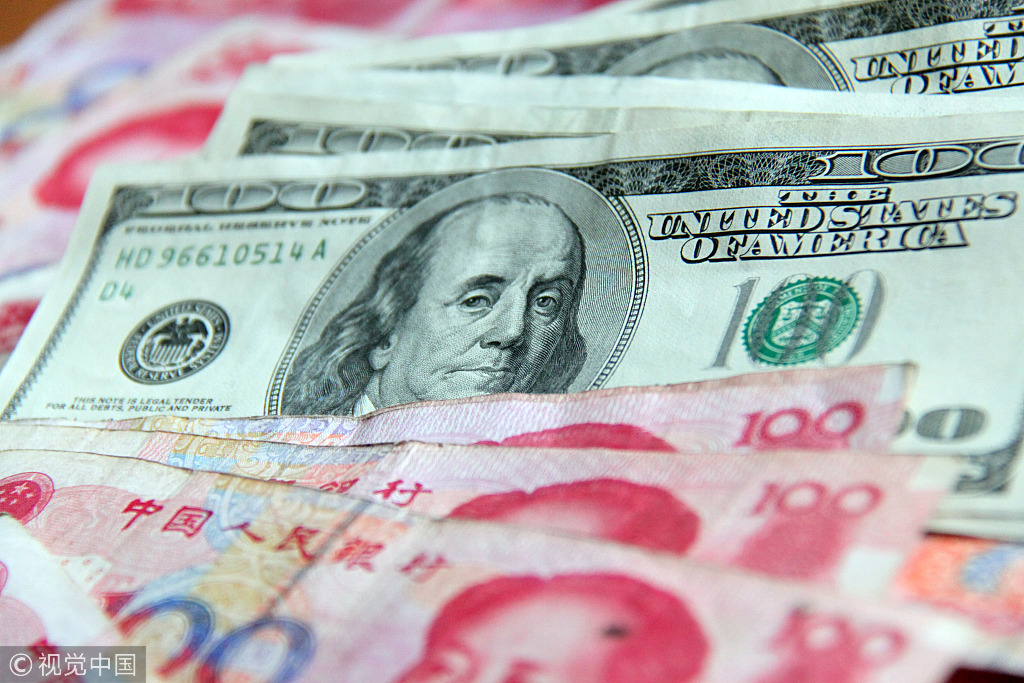Introduction
China’s foreign exchange (forex) reserves, a crucial economic indicator, have garnered significant attention in recent years, given their sheer magnitude and potential implications for global financial markets. Understanding the evolution of China’s forex reserves can provide valuable insights into the country’s economic progress, monetary policies, and foreign currency management strategies.

Image: www.chinadaily.com.cn
This article presents a comprehensive year-wise dataset of China’s forex reserves, shedding light on their historical trajectory and providing a valuable reference point for ongoing economic research and analysis.
The Year-Wise Dataset: A Historical Perspective
China’s forex reserves have experienced a remarkable growth over the past several decades, mirroring the country’s rapid economic expansion and its emergence as a global economic powerhouse. The following table offers a year-wise breakdown of China’s forex reserves from 2000 to 2022, providing a historical context for further analysis:
| Year | Forex Reserves (in USD billions) |
|---|---|
| 2000 | 165 |
| 2005 | 609 |
| 2010 | 2,854 |
| 2015 | 3,330 |
| 2020 | 3,221 |
| 2022 | 3,239 |
Understanding the Drivers and Impacts
The growth of China’s forex reserves has been influenced by several key factors, including its substantial trade surplus, foreign direct investment inflows, and the country’s intervention in currency markets to manage exchange rate volatility. The accumulation of these reserves has had both domestic and international implications:
Domestic Impact:
- Buffer against Economic Shocks: Forex reserves serve as a substantial buffer during economic downturns or external financial crises, providing the country with resources to maintain stability in its financial system and currency value.
- Currency Stability: China’s forex reserves allow the central bank to influence the value of its currency, the renminbi, and minimize excessive fluctuations against major global currencies.

Image: www.yicaiglobal.com
International Impact:
- Balance of Trade: China’s extensive forex reserves can be leveraged to support its balance of trade, providing the country with an advantage in negotiations with trading partners.
- Influence on Global Financial Markets: The size of China’s forex reserves gives it a significant influence on global financial markets, affecting exchange rates, interest rates, and investment flows.
Recent Trends and Outlook
The year-wise dataset highlights that China’s forex reserves have stabilized in recent years. This is largely attributed to ongoing efforts by the Chinese government to reduce reliance on foreign exchange intervention, promote domestic capital markets, and encourage internationalization of the renminbi.
Despite the slowdown in reserve accumulation, China’s forex reserves remain ample, providing the country with a solid foundation for economic growth and financial stability in the years to come. Experts anticipate that China will continue to manage its forex reserves prudently, striking a balance between safeguarding financial stability and promoting currency internationalization.
China Forex Reserves Yearwise Dataset
Conclusion
The year-wise dataset of China’s forex reserves offers valuable insights into the country’s economic trajectory, monetary policies, and foreign currency management strategies. Understanding the historical evolution and drivers of these reserves is crucial for assessing their potential impact on both the domestic and global financial landscapes. As China continues to play a pivotal role in the global economy, its forex reserves will undoubtedly remain a key metric for






